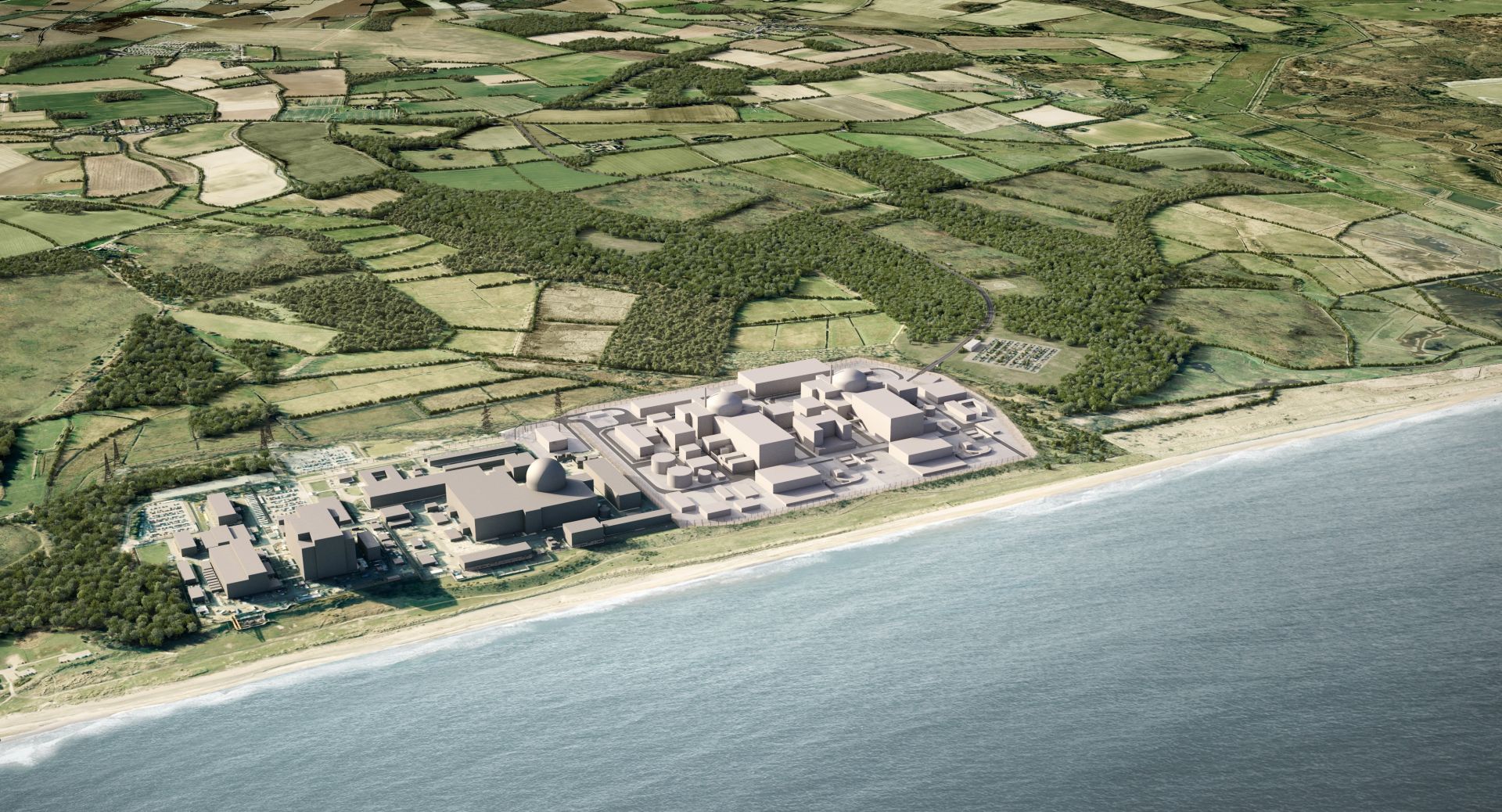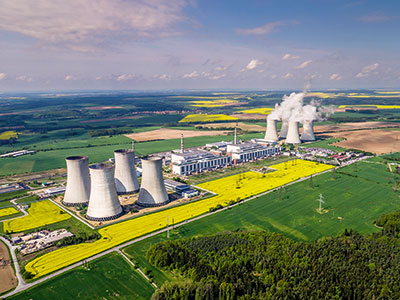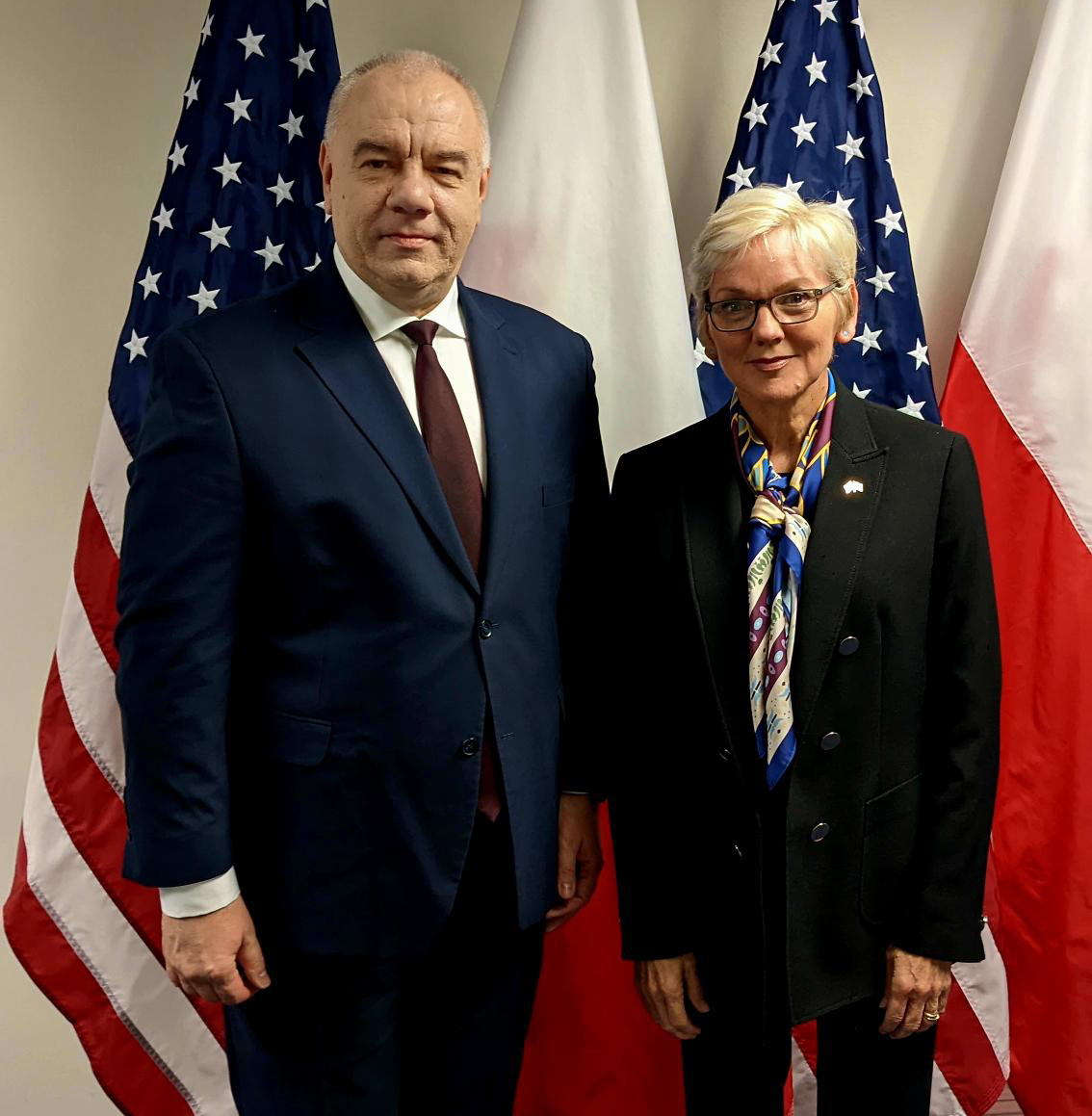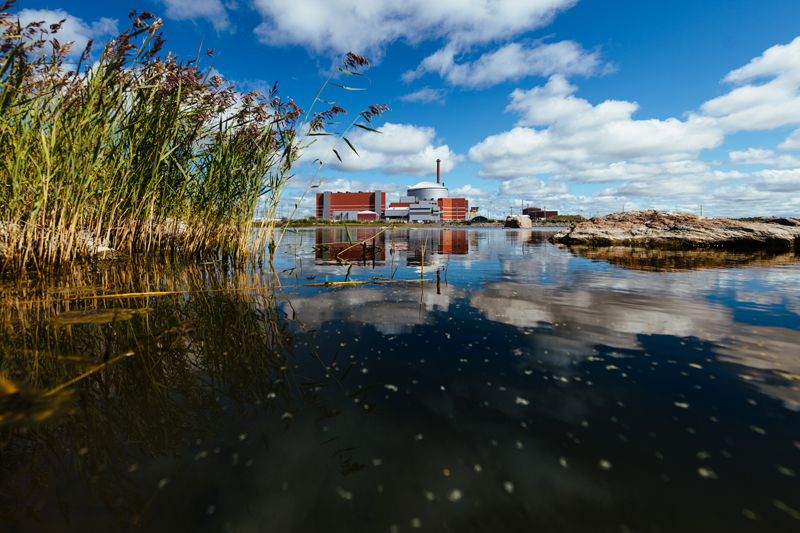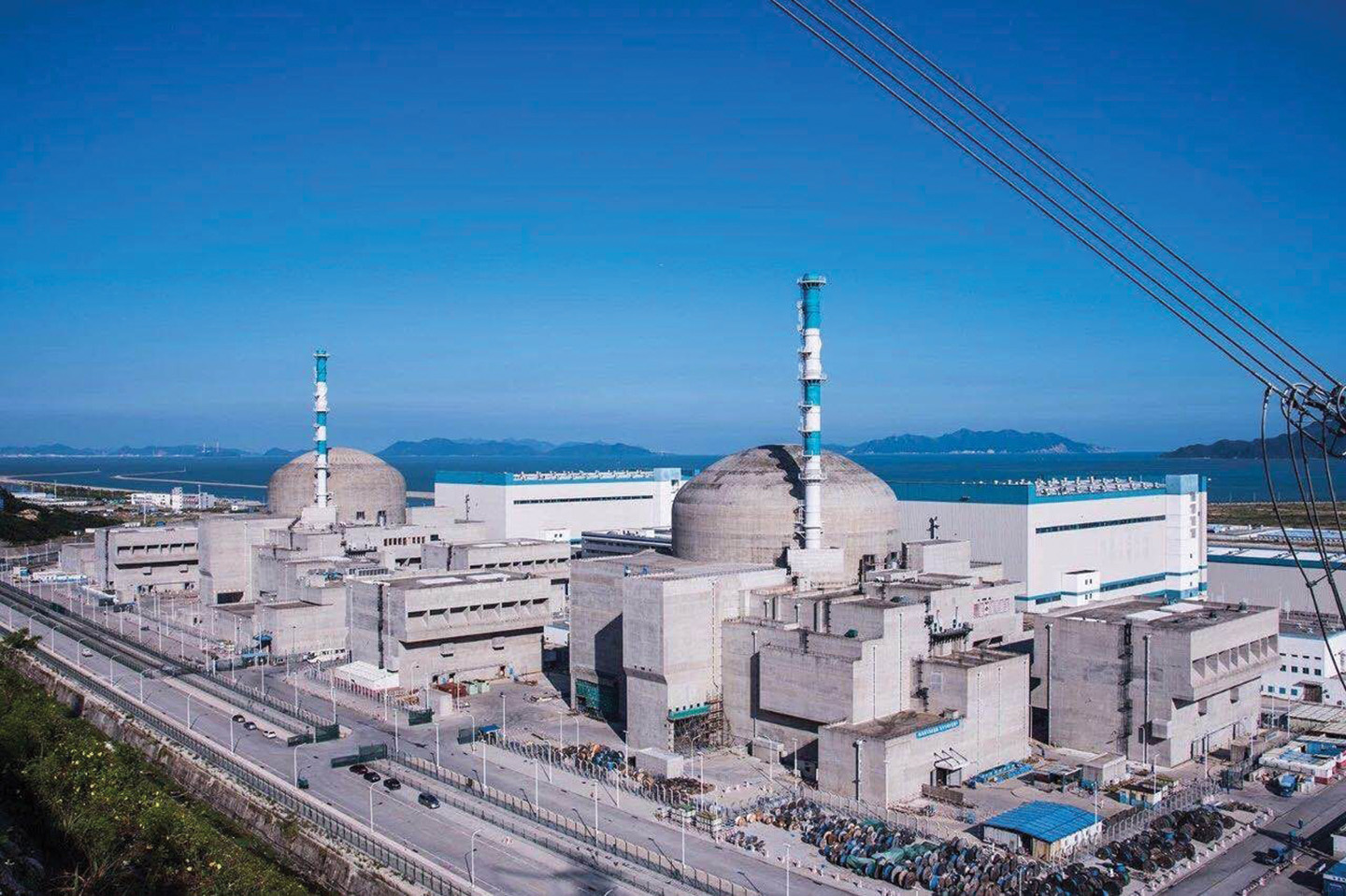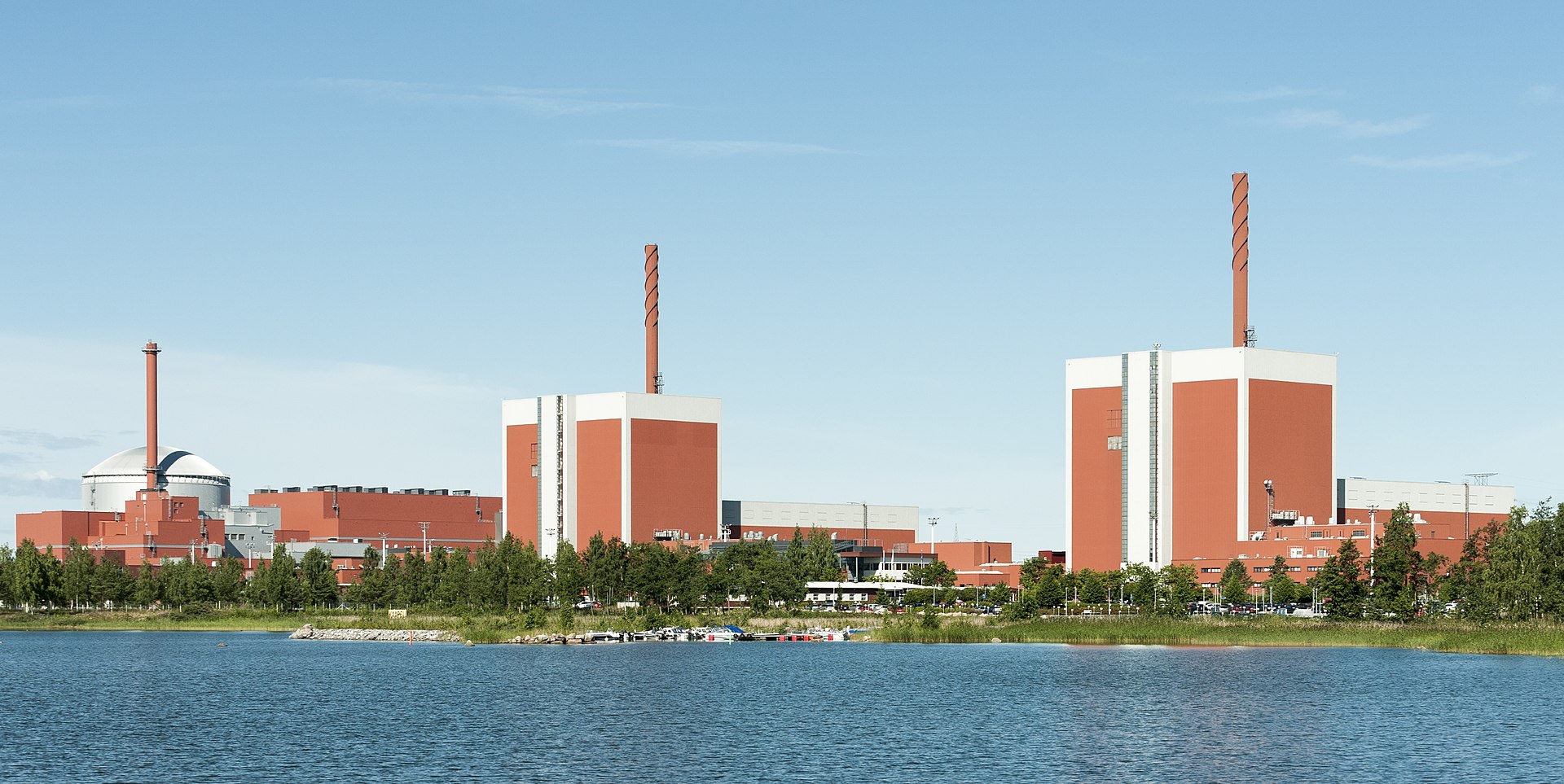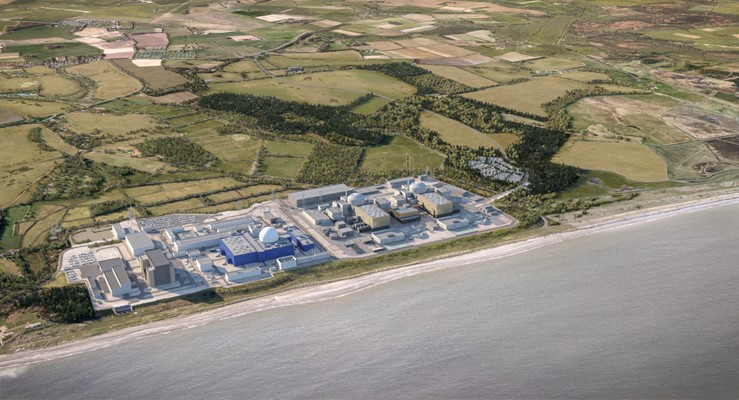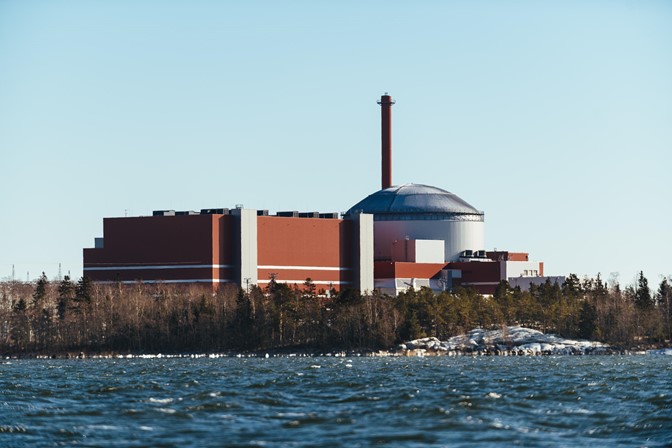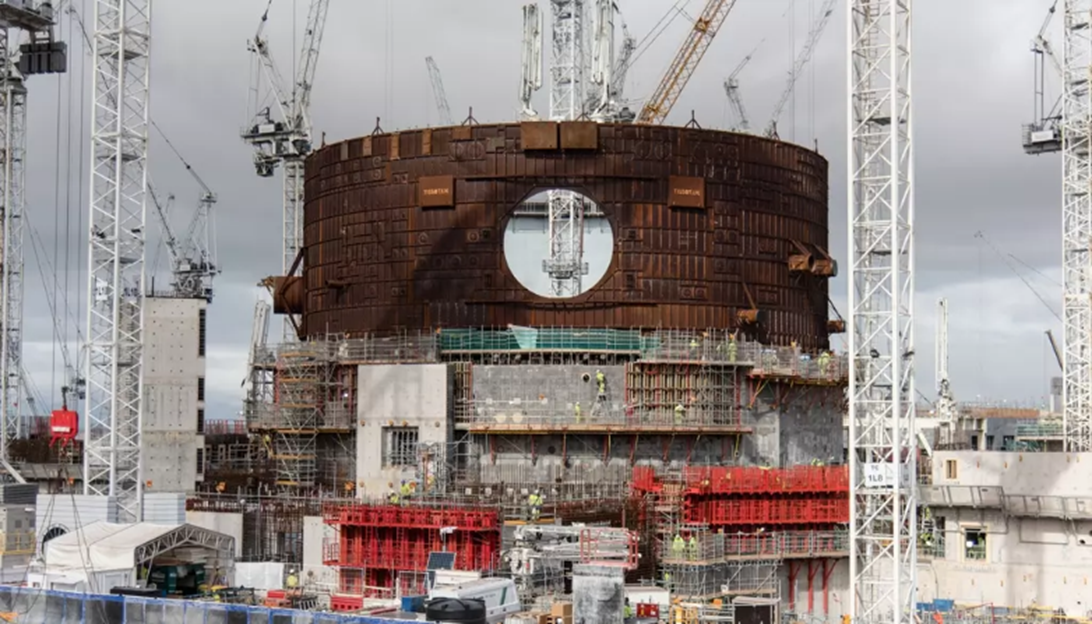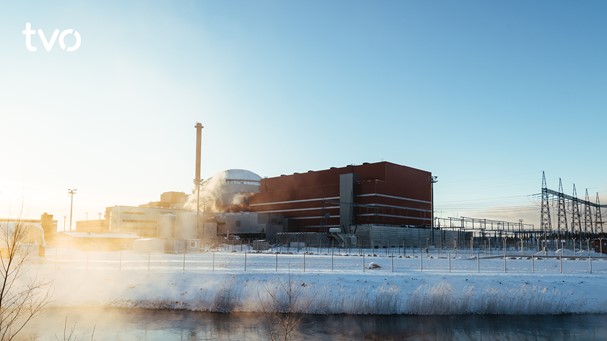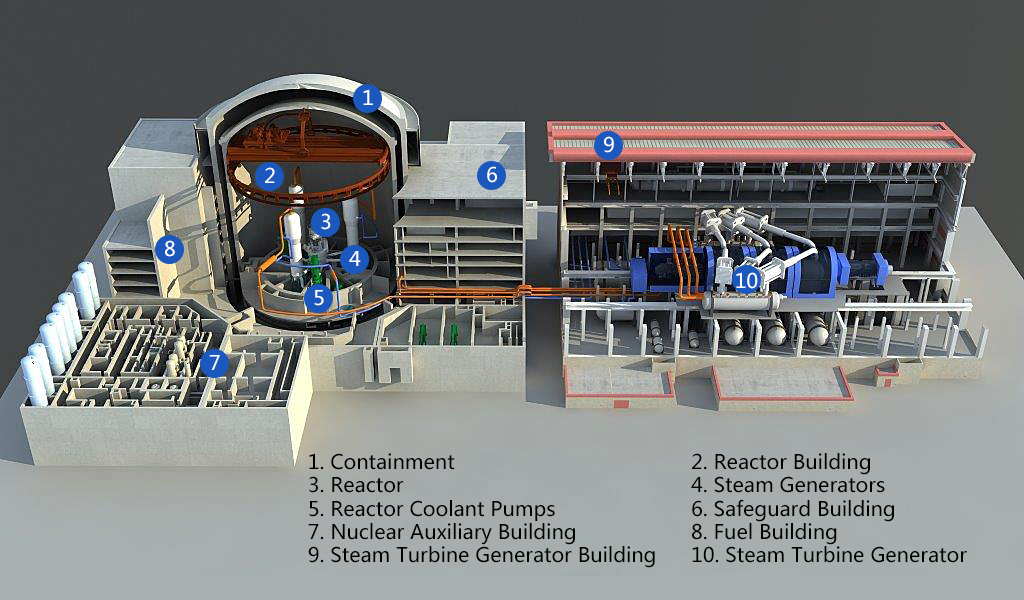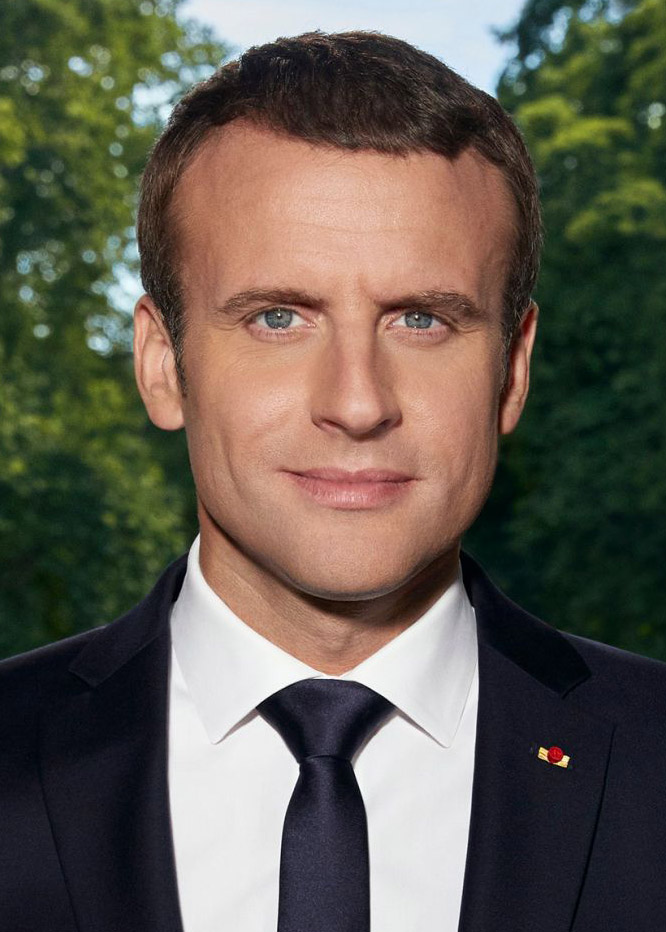Workers place the dome atop Hinkley Point C’s first reactor building on December 15. (Photo: EDF Energy)
EDF Energy’s new nuclear build megaproject at Hinkley Point C last Friday moved forward—or, more literally, upward then downward—when workers, with a substantial assist from Big Carl, the world’s largest crane, successfully lifted the C1 reactor building’s 47-meter-wide, 245-ton steel dome into place.
A computer-generated rendering of the Sizewell site on the Suffolk coast. Sizewell A and B are to the left and center (respectively) in this image; the section to the right is the Sizewell C area. (Image: EDF Energy)
In the second tranche of planned investment in Britain’s nuclear sector this summer, the U.K. government has made available £341 million (about $426 million) of previously allocated funding for development work on the proposed Sizewell C project in Suffolk, England.
A rendering of the Sizewell site on the Suffolk coast. Sizewell A and B are to the left and center (respectively) in the image; the section to the right is Sizewell C. (Image: EDF Energy)
The U.K. government recently confirmed a further £170 million (about $216 million) investment of previously allocated funding for development work on the proposed Sizewell C nuclear power plant project in Suffolk, England.
The Neckarwestheim nuclear power plant in Germany.
Ignoring a last-minute plea from a long list of scientific luminaries (including Nobel laureate Steven Chu and climate scientist James Hansen) to reconsider, as well as recent polls showing pronuclear sentiment among a majority of its population, Germany shut down its last three operating nuclear power plants late Saturday, ending 60-plus years of electricity generation from fission. (Germany’s first nuclear power plant, Kahl, was commissioned in 1961 and closed in 1985.)
A rendering of the Sizewell site on the Suffolk coast. Sizewell A and B are to the left and center (respectively) in the image; the section to the right is Sizewell C. (Image: EDF Energy)
The British government has announced an investment of £679 million (about $828 million) in the proposed Sizewell C nuclear plant in Suffolk, England, confirming chancellor of the exchequer Jeremy Hunt’s remarks on the project in his November 17 Autumn Statement.
The Dukovany nuclear power plant. (Photo: CEZ Group)
A Westinghouse-Bechtel team, France’s EDF, and Korea Hydro & Nuclear Power have all submitted their initial bids for securing the contract to build a fifth reactor at the Czech Republic’s Dukovany plant, Czech utility ČEZ has announced.
Finland’s Olkiluoto-3. (Photo: TVO)
The Unit 3 EPR at Finland’s Olkiluoto nuclear power plant has reached its full capacity of approximately 1,600 MWe for the first time, plant owner and operator Teollisuuden Voima Oyj has announced. Olkiluoto-3 is now the most powerful reactor in Europe and the third most powerful globally, according to TVO. (Currently, the world champions in that department are China’s 1,660-MWe Taishan-1 and -2, also EPRs.)
The Taishan nuclear power plant in China. (Photo: CGN)
China’s Taishan-1, which was shut down last summer due to damaged fuel rods, resumed operations on August 15.
The plant briefly made headlines last summer—as much for the damage inside the reactor as for the media fallout. In June 2020, plant operators found damage to the cladding on about five of the 60,000 fuel rods in Taishan-1, one of the plant’s two 1,660-MW EPRs. What happened next seemed like a bad game of “telephone.”
The Olkiluoto nuclear power plant in Finland. (Photo: TVO)
Teollisuuden Voima Oyj (TVO), owner and operator of the Olkiluoto nuclear power plant in Finland, has resumed Olkiluoto-3’s test production phase, following completion of maintenance and repair work at the new reactor’s turbine island, the company announced this week.
TVO had announced in June a delay to the unit’s commercial start of some three months—from September to December—after material that had detached from the steam guide plates was found in the turbine’s steam reheater in May, necessitating repair work and a halt to testing.
A computer-generated rendering of the Sizewell site on the Suffolk coast. Sizewell A and B are to the left and center (respectively) in this image; the section to the right is the Sizewell C area. (Image: EDF Energy)
The U.K. government has granted a development consent order (DCO) for EDF Energy’s proposed Sizewell C plant near Leiston in Suffolk, moving the new nuclear build project closer to a reality.
Nuclear New Build (NBB) Generation Company, an EDF Energy subsidiary, submitted the DCO application to the government’s Planning Inspectorate in May 2020, setting out the range of measures the project would implement to mitigate construction effects and maximize community benefits. The Planning Inspectorate accepted the application in June 2020 and completed its examination in October 2021. Recommendations were made to the secretary of state for business, energy, and industrial strategy this February.
Finland’s Olkiluoto-3. (Photo: TVO)
Teollisuuden Voima Oyj (TVO), owner and operator of Finland’s Olkiluoto nuclear power plant, has announced a further delay to the start of regular electricity generation at Unit 3. Commercial operation is now projected to begin this December, rather than the previously announced September. A report from Reuters puts the date at December 10.
According to TVO, material that had detached from the steam guide plates was found in the turbine’s steam reheater last month, requiring inspection and repair work.
Hinkley Point C’s Unit 2, in March of this year. (Photo: EDF Energy)
The target date for the start of electricity generation at Hinkley Point C’s Unit 1 reactor has been moved back to June 2027, following the completion of a schedule and cost review of the new nuclear build project, EDF announced last week.
While the review considered the main aspects of the project to construct two 1,630-MWe EPRs in Somerset, England, the schedule and cost of electromechanical works and of final testing were not examined, according to the utility.
Finland’s Olkiluoto-3. (Photo: TVO)
Europe’s first EPR, Unit 3 at Finland’s Olkiluoto nuclear power plant, was connected to the nation’s grid on March 12, Teollisuuden Voima Oyj (TVO), the facility’s owner and operator, has announced.
Olkiluoto-3 is also the first new Finnish reactor in four decades, and one of only three new reactors in Europe in the past 15 years. (Romania’s Cernavoda-2 began supplying electricity to the grid in August 2007, and Belarus’s Belarusian-1 in November 2020.)
[Click to view full image] Cutaway of the HPR1000 design. (Image: CGN)
The Office for Nuclear Regulation (ONR) and the Environment Agency (EA) have found the UK HPR1000 reactor suitable for construction in the United Kingdom, the regulators jointly announced last week.



